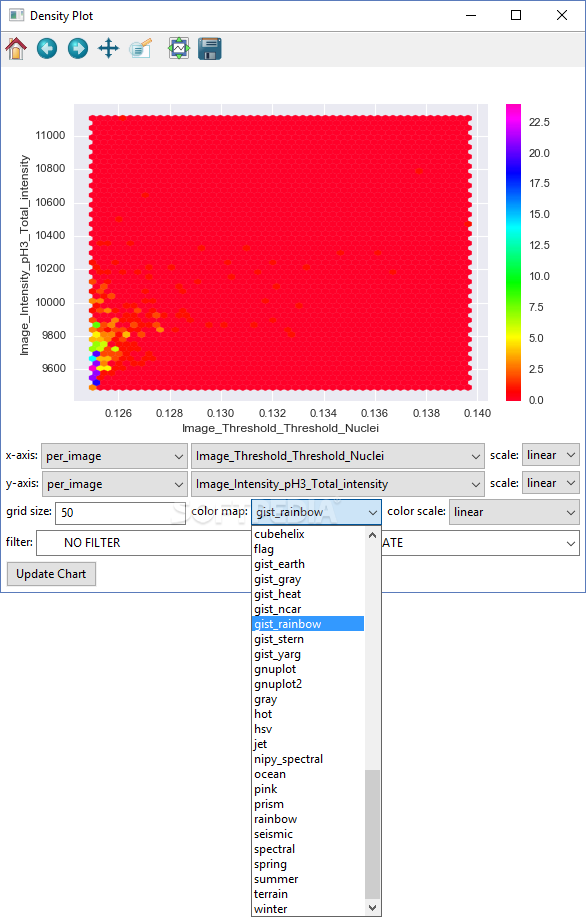
Using automated microscopes means that some images might be out-of-focus (automated focus finding systems may sometimes be incorrect), contain a small number of cells, or be filled with debris. The advent of automated microscopes that can acquire many images automatically is one of the reasons why analysis cannot be done by eye (otherwise, annotation would rapidly become the research bottleneck). Confocal stacks will require 3D processing and widefield pseudo-stacks will often benefit from digital deconvolution to remove the out-of-focus light. The choices at the image acquisition stage will influence the analysis and often require special processing. In some cases, the original image could even have been acquired in non-visible wavelengths (infrared is common). For consumption, the images are often displayed in false color by showing each channel in a different color, but these may not even be related to the original wavelengths used. In general, filters are used so that each dye is imaged separately (for example, a blue filter is used to image Hoechst, then rapidly switched to a green filter to image GFP). Most microscopy system will also support the collection of time-series (movies).

Several types of microscope are regularly used: widefield, confocal, or two-photon. Molecules of interest are marked with either green fluorescent protein (GFP), another fluorescent protein, or a fluorescently-labeled antibody. Multiple dyes were imaged and are shown in different colours.įluorescent microscopy allows the direct visualization of molecules at the subcellular level, in both live and fixed cells. Main article: Fluorescent microscopy Fluorescent image of a cell in telophase.

Several data collection systems and platforms are used, which require different methods to be handled optimally. There has been an increasing focus on developing novel image processing, computer vision, data mining, database and visualization techniques to extract, compare, search and manage the biological knowledge in these data-intensive problems. In addition, automated systems are unbiased, unlike human based analysis whose evaluation may (even unconsciously) be influenced by the desired outcome. Additionally, and surprisingly, for several of these tasks, there is evidence that automated systems can perform better than humans.

This has led to a data explosion, which absolutely requires automatic processing. The goal is to obtain useful knowledge out of complicated and heterogeneous image and related metadata.Īutomated microscopes are able to collect large numbers of images with minimal intervention. It focuses on the use of computational techniques to analyze bioimages, especially cellular and molecular images, at large scale and high throughput. You can specify any number of image channels (including, for example, outlines of objects that resulted from image processing) by adding path and filename columns to the image table of your database for each channel.ĬPA currently requires image files to be monochromatic several individual channels can be combined into a color image for viewing within the software.ĬPA currently supports the following image file types: BMP, CUR, DCX, Cellomics DIB, FLI, FLC, FPX, GBR, GD, GIF, ICO, IM, IMT, IPTC/NAA, JPG/JPEG, MCIDAS, MIC, MSP, PCD, PCX, PIXAR, PNG, PPM, PSD, SGI, SPIDER, TGA, TIF/TIFF, WAL, XBM, XPM, XV Thumbnails.Bioimage informatics is a subfield of bioinformatics and computational biology. An image in this sense usually includes several individual monochromatic images that show the different wavelengths (channels) as well as images that show outlines of identified objects. Throughout CPA, the term image is meant to include all image data associated with an analyzed field-of-view. The directory structure does not matter as long as the file paths stored in the image table point to the correct images. These can be stored either locally or remotely and accessed via HTTP.


 0 kommentar(er)
0 kommentar(er)
